Written by
- Sanghoon Lee, KMD, MPH, PhD, DiplAc, LAc Professor, Department of Acupuncture and Moxibustion, College of Korean Medicine Kyunghee university
- Dongwoo Nam, KMD, PhD Assistant Professor, Department of Acupuncture and Moxibustion, College of Korean Medicine Kyunghee university
- Jeongmin Ko, KMD, Dr.Jeongmin Ko’s Korean Medicine Clinic (Inc.) All that Korean Medicine
- Hyojung Kwon, KMD, PhD (Inc.) All that Korean Medicine
- Seung Min Kathy Lee, KMD, PhD, Research Fellow Department of Acupuncture and Moxibustion, College of Korean Medicine Kyung Hee University
- Park Jun Hyeong, KMD, MS, Researcher, Department of Acupuncture and Moxibustion, College of Korean Medicine
Kyung Hee University
Published in December 2017 by Korean Society of Acupuncture & Moxibustion Society
6. Five Shu points(五兪穴)
Five shu points are the five major points of each meridian that are located along the limb. Each meridian flows from the tip of each limb to the elbows and knees to be named as 井(jing well), 滎(ying spring), 兪(shu stream), 經(jing river), and 合(he sea)
consecutively. Literally, Jing means well, Ying means spring, shu means stream, Jing means river, and he means sea.
Along the flow, the meridianal qi of the five shu points flow from small to great, from shallow to deep.
*Meaning of five shu points
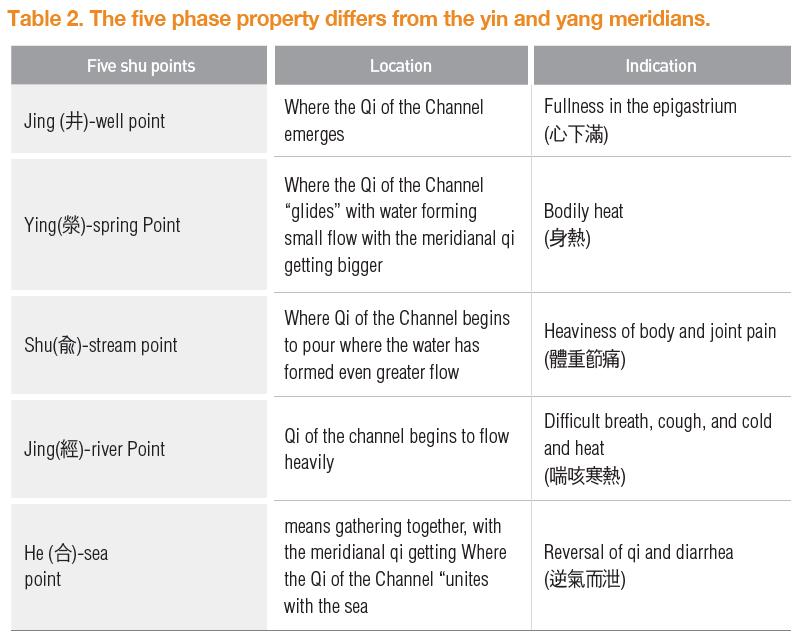
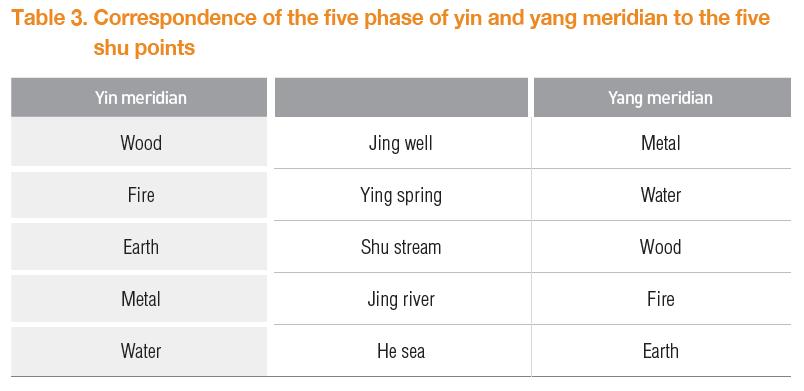
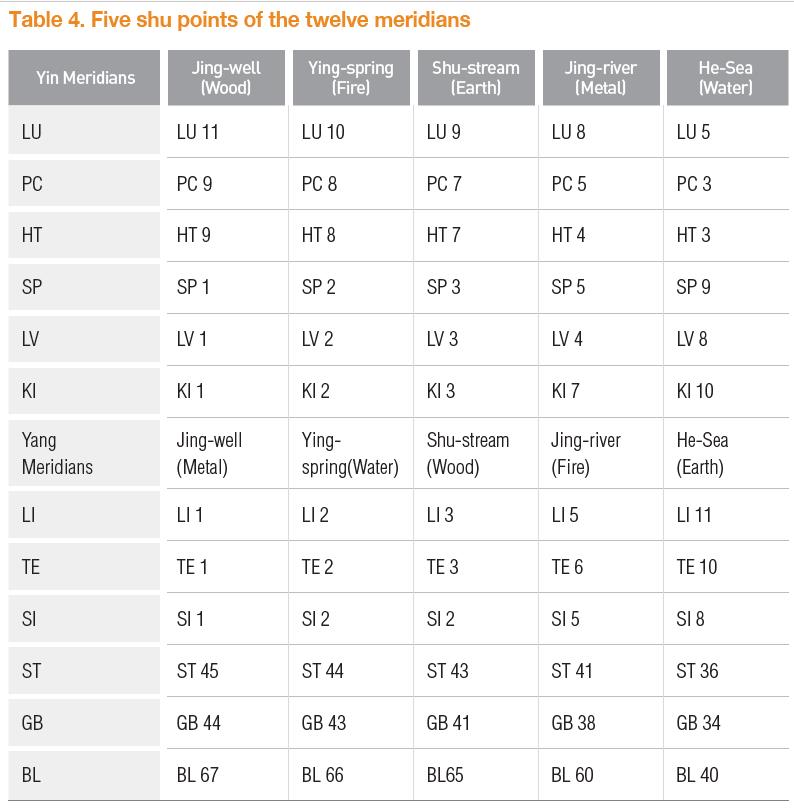
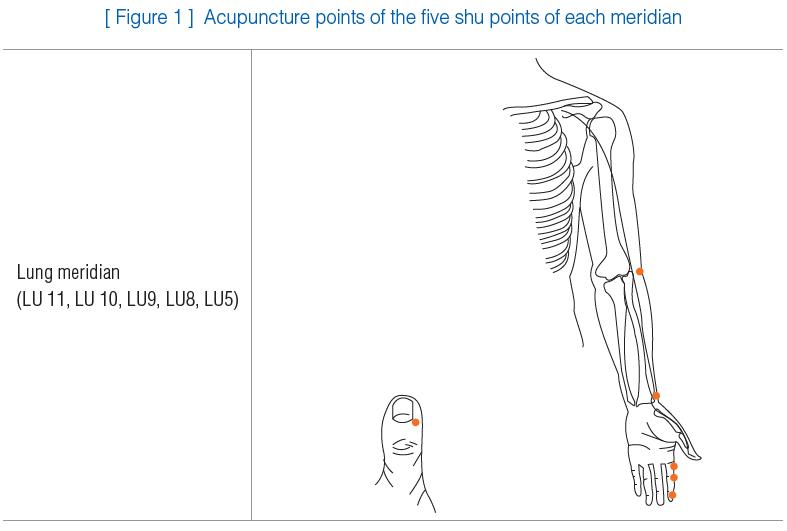
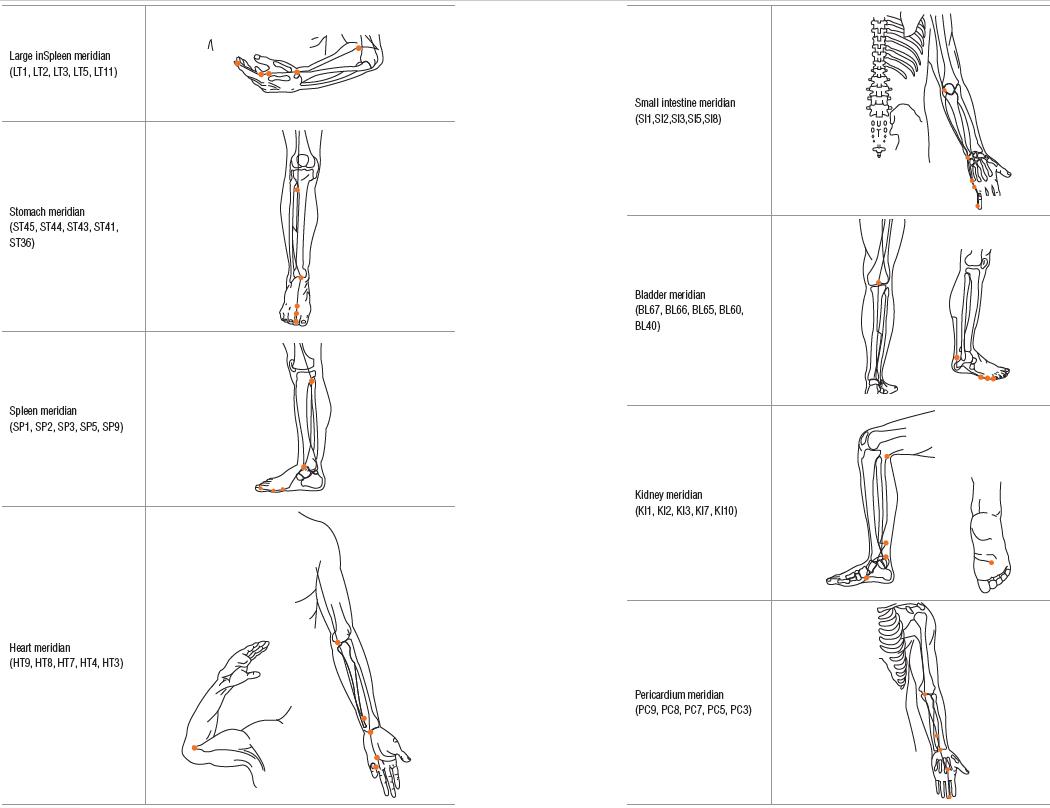
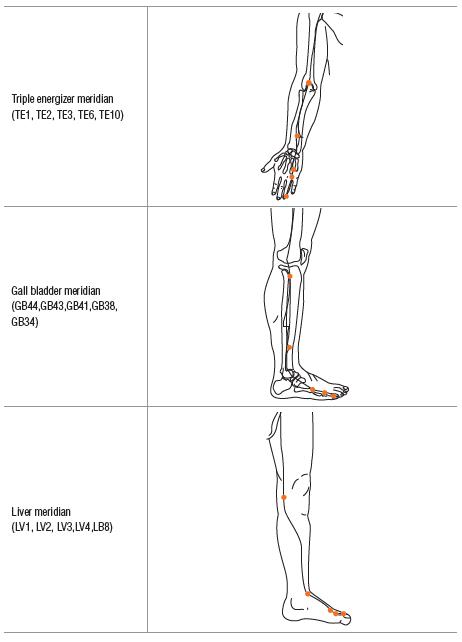
7. Terminology in Saam acupuncture
- 1) Jung-gyeuk(正格): The two terms Jung-gyeuk and Seung-gyeuk were first used by Ji san (芝山) in the book 『Essentials of economy (經濟要訣)』. Jung-gyeuk (正格) refers to regulating the right qi(正氣) of the according meridian. That is why many know the concept of Jung-gyeuk as tonification.
- 2) Seung-gyeuk (勝格) refers to regulating the excessive qi of the according meridian. In contrast to Jung-gyeuk, the concept of Seung-gyeuk is understood as sedating. However, Jung-gyeuk (正格) is not tonification so much as Seung-gyeuk (勝格) is not sedation.
- 3) Han-gyeuk (寒格): Han-gyeuk treats cold disease. It makes the condition become warmer.
- 4) Yeol-gyeuk (熱格): Yeol-gyeuk treats heat disease. It makes the condition become cooler.
- 5) 6) Tonification/sedation: matching of the concept of tonification and sedation cannot be put directly with Jung-gyeuk (正格) and Seung-gyeuk (勝格).
- 7) 相生: mutually engender
- 8) 相剋: mutually restrain
- 9) 相侮: mutual insulting
- 10) 相乘 : severe form of mutual restrain(相克)
- 11) 迎: acupuncturing in the opposite direction of the flow of the according meridian (in order to subtract in the flow of qi)
- 12) 隨: acupuncturing along the direction of the flow of the according meridian (in order to assist in the flow of qi)
8. Five phases
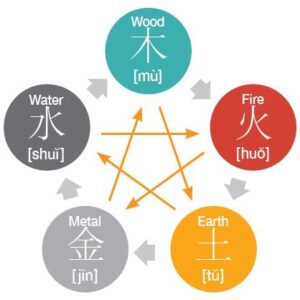 The five phases mutually engender (相生) and mutually restrain (相剋).
The five phases mutually engender (相生) and mutually restrain (相剋).
- Mutual Generation (相生): The clockwise direction of the five elements shows the mutual generation of five phases. Wood generates fire, fire generates earth, earth generates meal, earth engenders metal, metal engenders water, and water engenders wood.
- Mutual Overcoming (相克=官): The starry arrows in the diagram indicates the relationships of the five elements restricting
or overcoming one another. Wood restrains earth, earth restrains water, water restrains fire, fire restrains metal, and metal restrains wood. Mutual Overacting (mutual restriction) (相乘) Severe form of mutual overcoming(相克). Sometimes we call this mutual bullying. As the word itself reveals, mutual overacting occurs when one element is too strong which causes the corresponding overcame-element to be overly suppressed. Wood overacts earth, earth overacts water, water overacts fire, fire overacts metal, and metal overacts wood. - Mutual insulting (counter-restriction) (相侮=讐): Insult here means when one element is so strong that the corresponding overcoming element is overcome. For example, when the fire is too powerful, water will be turned into water vapor but cannot fight fire. The direction of insult is the exact opposite of the direction of overcoming. This is, earth insults wood, water insults earth, fire insults water, metal insults fire, and wood insults metal.

































